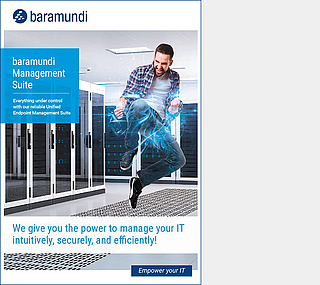Infrastructure
IT infrastructure forms the core of modern corporate computing and networking. It combines physical and virtual resources, technologies, services and processes that are essential for the smooth operation, management and provision of IT services.
This structure forms the basis for cross-location, cross-department and cross-task collaboration and the efficient use of resources.
IT infrastructure security and stability rely on IT admins
IT administrators play a crucial role in planning, implementing, monitoring and maintainingIT infrastructure. From configuring servers to managing networks to data security, they are responsible for all aspects of operating infrastructure systems. Their scope of work includes continuously distributing updates and patches, as well as creating backup and recovery plans and implementing them when necessary.
Increase efficiency, minimize downtime: The benefits of a smart IT infrastructure
A smart IT infrastructure creates opportunities to optimize workflows, minimize downtime and use resources more efficiently. The scalability of the infrastructure enables companies to easily adapt their IT environment for organizational growth. Modern infrastructure also generates opportunitiesto improve competitivenesswith innovative technologies such as cloud computing, artificial intelligence (AI) and the Internet of Things (IoT).
Challenges with complex IT infrastructure: security & cost
The more complex an IT infrastructure, the more difficult it is to manage and integrate new components. Above all, effective security is paramount to prevent cyberattacks and data breaches. The cost of building, upgrading and maintaining more complex systems can be significant.
IT admins are responsible for implementing systems to maximize the opportunities and manage the challenges. UEM(Unified Endpoint Management) solutions are increasingly being used to do so because they are designed to promote a uniform and transparent infrastructure with the help of automation
Do you wish to try out the baramundi Management Suite?
Request now!
Product Brochure
Get detailed info about the Management Suite in our product brochure!
